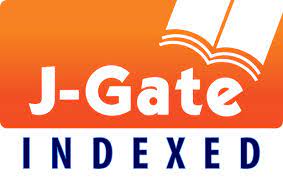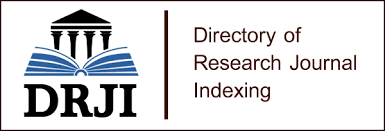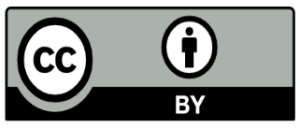INTERNATIONAL OIL CORPORATIONS (IOCS), ASSOCIATED GAS UTILIZATION TECHNOLOGIES AND GAS FLARE ELIMINATION STRATEGIES: IMPLICATION FOR ZERO-GAS FLARING REGIME IN NIGERIA
Abstract
The purpose of this study is to determine if the adoption of inefficacious gas utilization technologies and gas flare elimination strategies by IOCs hinders their compliance to the zero-gas flaring deadlines resulting to the failure of zero-gas flaring policy in Nigeria. By adopting rentier state theory, using qualitative methods and relying on secondary sources of data, the study concludes that adoption of ineffective gas utilization technologies and gas flare elimination strategies by oil multinationals impedes them from complying with the zero-gas flaring regime leading to the failure of zero-gas flaring policy in Nigeria.
References
Ahmad, I.M., Zughaid, M., El-Arafi, M. & Mohammed, G.A. (2002). Gas-to-Liquid (GTL) Technology: New Energy Technology for the Third Millennium. SPE Paper 78573 Presented at the 10th Abu Dhabi International Petroleum Exhibition and Conference, Abu Dhabi.
Alawode, A.J. & Omisakin, O.A. (2011). Monetizing Natural Gas Reserves: Global Trend Nigeria’s Achievements and Future Possibilities. The Pacific Journal of Science and Technology 12 (1), 138-151.
Aniche, E.T. (2014). The Effects of Oil Joint Venture Partnerships on Enforcement of Zero-Gas Flaring Policy in Nigeria, 2003-2011. A Ph.D Thesis Presented to the Department of Political Science, University of Nigeria, Nsukka (UNN).
Aniche, E.T. (2015). Oil Sector and Non-enforcement of Zero-gas Flaring Policy in Nigeria. Saarbrucken: Lambert Academic Publishing (LAP) and OmniScriptum GmbH & Co. KG.
Apanel, G. (2005). GTL Update. SPE Paper 93580 Presented at the 14th SPE Middle East Oil and Gas Show and Conference, Bahrain.
Asada, D. (2010). The Legal Regime of Concessions Agreements in the Nigerian Oil Industry. [Online] Available: http://dspace.unijos.edu.ng (July 6, 2012).
Broere, W. (2008). The Elusive Goal to Stop Flares. Shell World, May 5.
Buzcu-Guven, B., Harriss, R. & Hertzmark, D. (2010). Gas Flaring and Venting: Extent, Impacts and Remedies. In J. Barnes, et al (eds.), Energy Market Consequences of an Emerging US Carbon Management Policy, Energy Forum. Houston: James A. Baker III Institute for Public Policy, Rice University.
Dayo, F.B. (2008). Clean Energy Investment in Nigeria: The Domestic Context. Manitoba: International Institute for Sustainable Development.
Fleish, T.H., Sills, R.A. & Briscoe, M.D. (2002). Emergence of the Gas-to-Liquids Industry: A Review of Global GTL Developments. Journal of Natural Gas Chemistry 11, 1-4.
Hall, K. (2005). A New Gas to Liquids (GTL) or Gas to Ethylene (GTE) Technology. Catalysts Today 106, 243-246.
Ifesinachi, K. & Aniche, E.T. (2014). Oil Joint Venture Partnerships and Nigerian Economy. University of Nigeria Journal of Political Economy, 7 (1&2), 1-24.
Ishinone, M. (2004). Gas Flaring in the Niger Delta: The Potential Benefits to its Reduction on the Local Economy and Environment. [Online] Available: http://nature.berkeley.edu/classes (September 21, 2012).
Kindzierski, W.D. (2000). Importance of Human Environmental Exposure to Hazardous Air Pollutants from Gas Flares. Environmental Reviews, 8, 41-62.
Leahey, D.M. & Preston, K. (2001). Theoretical and Observational Assessments of Flare Efficiencies. Journal of the Air and Waste Management Association, 51, 1620-1616.
Lichun, D., Shun’an, W., Shiyu, T. & Hongjing, Z. (2008). GTL or LNG: Which is the Best Way to Monetise ‘Stranded’ Natural Gas. Petroleum Science, 5, 388-394.
Marcano, J. & Cheung, R. (2007). Monetizing Stranded Natural Gas. Oil and Gas Financial Journal, 4 (2).
Oguejiofor, G.C. (2006). Gas Flaring in Nigeria: Some Aspects for Accelerated Development of SasolChevron GTL Plant at Escravos. Energy Sources, 28, 1365-1376.
Omiyi, B. (2001). Shell Nigeria Corporate Strategy for Ending Gas Flaring. A Paper Delivered at A Seminar on Gas Flaring and Poverty Alleviation in Oslo, Norway, June 18-19.
Rahman, G.A. & Al-Masamani, M. (2004). GTL: Is it an Attractive Route for Gas Monetization? SPE Paper 88642 Presented at the 11th Abu Dhabi International Petroleum Exhibition and Conference, Abu Dhabi.
Rahmin, I.I. (2005). GTL Prospects: Stranded Gas, Diesel Needs Push GTL Work. Oil and Gas Journal (OGJ), 103 (10).
Sonibare, J.A. & Akeredolu, F.A. (2006). Natural Gas Domestic Market Development for Total Elimination of Routine Flares in Nigeria’s Upstream Petroleum Operations. Energy Policy, 34, 743-753.
Strosher, M. (1996). Investigation of Flare Gas Emissions in Alberta. Alberta: Alberta Research Council.
Tengisirek, A. & Mohamed, N. (2002). Towards Zero Flaring. Middle East and Asia Reservoir Review, 3, 6-9.
Zhang, K. & Pang, M. (2005). The Present and Future of the World’s LNG Industry. International Petroleum Economics, 13, 55-59.
Published
How to Cite
Issue
Section
License
Copyrights for articles published in Journal of Asian and African Social Science and Humanities are retained by the authors, with first publication rights granted to the journal. The journal/publisher is not responsible for subsequent uses of the work. It is the author's responsibility to bring an infringement action if so desired by the author.
Articles published in Journal of Asian and African Social Science and Humanities are published under the Creative Commons Attribution (CC-BY) license, which permits others to distribute, remix, tweak, and build upon your work as long as they credit you for the original creation.
Â














